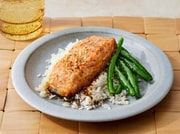Question 1: If you sailed due west from Portugal, what would be the first continent you would reach?
Question 2: What is the pH of pure water at 25 °C?
A pH of 7 is considered neutral. Substances with a pH less than 7 are acidic, while those with a pH greater than 7 are basic or alkaline. The pH scale ranges from 0 to 14.
Question 3: If an orchestra is playing at 440Hz, what note are they tuned to?
The A above middle C, known as A4 or A440, has a frequency of 440 Hz and serves as a standard for musical pitch. Most modern orchestras use this as their tuning reference.
Question 4: When was the first U.S. paper currency issued?
The U.S. Department of the Treasury first issued paper U.S. currency in 1862 to make up for the shortage of coins and to finance the Civil War.
Question 5: What is the most widely spoken language in the world by total number of speakers?
While English is often considered the global lingua franca, Mandarin Chinese actually has the highest number of total speakers worldwide, with over 1.1 billion speakers. This is largely due to China's huge population. However, English remains the most widely spoken language across different countries.
Question 6: Why is the cow considered sacred in Hinduism?
In Hinduism, the cow is revered as a selfless nourisher, providing milk, dung (used as fertilizer and fuel), and labor (for plowing fields). Hindus do not eat beef and many avoid leather products out of respect for the cow. Killing or injuring a cow is considered a sin.
Question 7: Why are the Moai statues on Easter Island famous?
The Moai are monolithic human figures carved between the years 1250 and 1500 by the Rapa Nui people on Easter Island in eastern Polynesia. Nearly half are still at Rano Raraku, the main moai quarry, but hundreds were transported from there and set on stone platforms called ahu around the island's perimeter. The moai are famous for their large, broad noses and strong chins, along with rectangle-shaped ears and deep eye slits.
Question 8: How many naturally occurring elements are there in the periodic table?
While there are 118 confirmed elements in the periodic table, only 94 of these occur naturally. The remaining 24 elements are artificially produced through nuclear reactions.
Question 9: When did the Eiffel Tower open to the public?
The Eiffel Tower was constructed for the 1889 World's Fair in Paris. It took 2 years, 2 months and 5 days to build and was meant to be a temporary exhibit, but it proved so popular that it was never dismantled. Today it is one of the most iconic and visited monuments in the world.
Question 10: How many time zones are there in Russia?
Russia is the world's largest country by land area, spanning 11 time zones from Kaliningrad in the west to the Kamchatka Peninsula in the east. This means when it's 12 noon in Kaliningrad, it's already 11 PM in Petropavlovsk-Kamchatsky.







Although Africa is the closest continent to Portugal's southern coast, if you sailed directly west from anywhere in Portugal, you would first reach North America. Specifically, you would likely make landfall somewhere in Newfoundland, Canada or the northeastern United States, depending on your starting point in Portugal and ability to maintain a straight westward heading.